|
First
Assignment for Thursday, January 27, 2005.
Read
the first 10 pages of Freud's Dora Case History--come to class ready to
read aloud the passages that your believe reveal Freud being a tad "dodgy,"
as the English put it, a bit evasive and up to NO good.
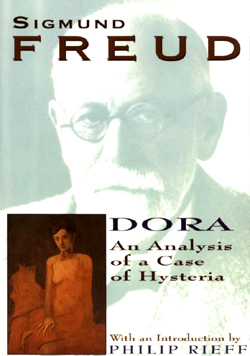
Tuesday
February 1, 2005
Class postponed.
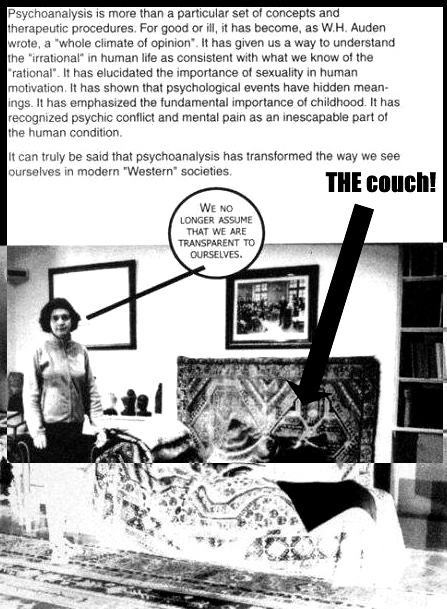
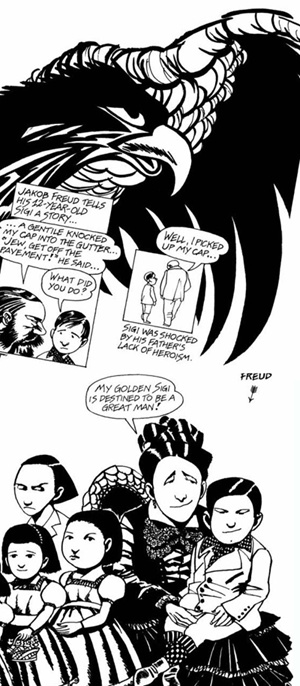
Thursday,
February 3, 2005
Walk into
class having read the first 100 pages of the Dora case history; as you
read, look for the kind of things we found today--places where Freud
"creates" Dora, outs his act of "creating" her (the meta-textual moment)
and, lastly, places where you can apply Freud to Freud; extra-credit if
you come to class having written a one page CRITICAL SUMMARY of the
Dora Case history. extra-extra-credit if you memorize and perform a key
paragraph from the reading for the class (first three volunteers via email).
Also, while reading Freud, take breaks and delve into Zarate and Appignanesi's
Freud for Beginners.
Tuesday, February
8, 2005
As you walk
into the room, you turn your cellphone off, make sure you arrive on time,
and pick a pen that does not click--you do this as you fear that Professor
Nericcio's pathologies with regard to distractions may grow should you
dare to have your phone/totem ring, enter tardy, or click your evil pen.
You sit down happy, as you have finished BOTH Freud's Dora case history
AND Zarate/Appignanesi's FREUD FOR BEGINNERS. Be prepared to talk
about particular Zarate-penned images that seem particularly adept at communinicating
key Freudian theories.
Thursday, February
10, 2005
Review and
catch up day with all sorts of texts on the agenda: Zarate's amazing renditions
of Freudian theory, Appignanesi's cogent gloss of Freud's work and Freud's
life, Marker's meditation on blindness and memory in LA JETEE, and Freud's
Oedipus theory.
Tuesday, February
15, 2005
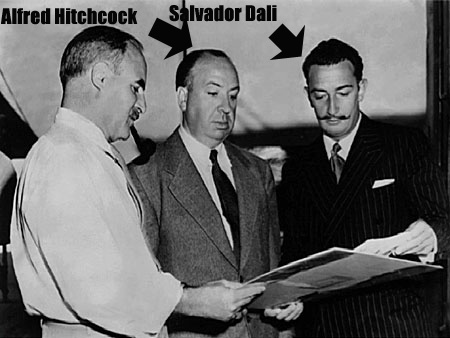
As you enter
class today, you will have read a good chunk of Jensen's novel GRADIVA
and, maybe, perchance, even started the first few pages of Freud's analysis
of the same in the edition of the book I have assigned for you. In
class we will screen Alfred Hitchcock's SPELLBOUND--a classic Hollywood
classic that focuses on psychoanalysis. In the center of SPELLBOUND lurks
a classic dream sequence illustrated by the illustrious, self-loving SURREALIST,
Salvador Dali. In his honor, and before SPELLBOUND, we will screen
his classic short (co-authored with the infamous Luis Buñuel), UN
CHIEN ANDALOU. 'CHIEN does not feature a dream sequence, it IS a dream
sequence. Come ready to transcribe Dali and Buñuel's surrealist
madness and Hitchcock's crazy melodrama into elements of your psychoanalytical
training.

Thursday, February
17, 2005
In class, we
will conclude our screening of SPELLBOUND--time permitting, we will begin
our discussion; bring your dreambooks to class and enter your notes from
the film screening into its pages--perhaps Hitchcock's leering gazes will
weave their way into your unconscious!


|
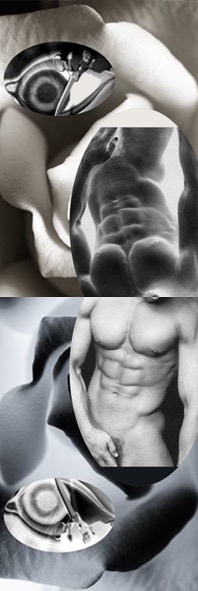
|
| Tuesday
| March 15, 2005
Walk into class
having read ALL of the Bonafaux's VAN GOGH; it is a powerful and incredibly
useful portfolio of a book: one part gallery; one part diary; one part
biography; one part autobiography (especially the letter excerpts in the
yellow pages). As you read, BE VERY AWARE of what it is you are reading--is
it Bonafaux's opinion? Van Gogh's brother Theo's view? A medical report?
etc... In essence, Bonafaux's critical study attempts to immerse
us in the material world of Van Gogh and his time. I hope you enjoy
your visit to this aesthetic time machine--but KNOW this, without the power
of your curious imagination, this book might evolve before your eyes into
a boring textbook. |
|